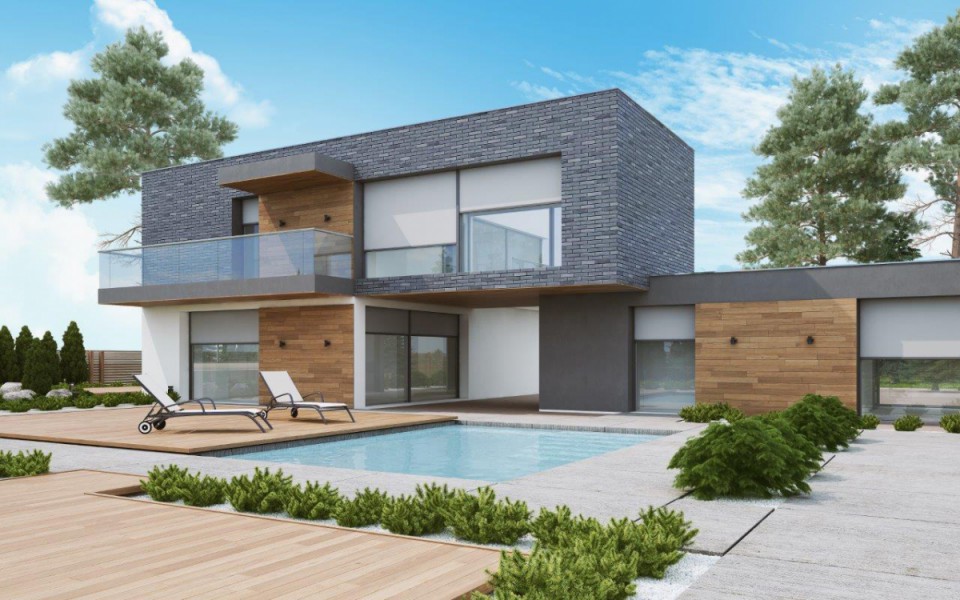How do you build to save on energy and heating bills?
Heating and energy costs concern not only individual consumers. The service and industrial sectors are also increasingly feeling its effects. For industries such as hospitality and gastronomy, rising energy prices are becoming a serious issue as they are starting to be disproportionately high compared to operating costs. The construction industry must respond to the needs of energy-efficient construction. And it needs to be done as quickly as possible.
Energy costs in the hospitality, gastronomy, and industrial sectors have increased significantly, presenting serious challenges for these industries. Transferring additional costs to consumers is becoming challenging, as they are also experiencing the impact of inflation and are more careful with their spending.
Real estate specialists note that an increasing number of investors – both individual and commercial – are seeking properties that can provide energy cost savings due to their energy efficiency.
What should you keep in mind when building a house, hotel, or facility for service activities?
The foundation of energy efficiency is the comprehensive design of the building to maximally support the reduction of energy consumption. Starting with energy-efficient facades (such as the MB-TT50 aluminium system, which has a thermal insulation value (Uf) starting from 0.5 W/m2K), through selecting appropriate window and door glazing and partitions, to designing the layout of rooms and circulation to concentrate energy in heat zones while allowing for energy reduction in areas that require less, all the way to equipping the building with modern energy generation systems such as photovoltaic panels, heat pumps, or heat recovery systems.
Each of these elements can ultimately reduce the building’s operating costs. Together, they can enable the creation of a building with minimal or even zero energy demand. What can be used effectively?
Glazing on the south and southwest sides
In the past, large glazing was considered energy-inefficient, as it caused significant heat loss that was not compensated by the heating of the room from the sunlight entering the space.
Today, we have access to modern materials and technologies that allow us to create glazing with high-performance characteristics. An example is the windows and doors in the Aluprof MB-104 Passive aluminium system, which can be used in passive construction and achieves a thermal insulation value (Ud) from 0.62 W/m2K.

SIEMENS CAMPUS, DIDSBURY TECHNOLOGY PARK, Hebburn, UK. Systems used: MB-104 Passive, MB-SR50N
The MB-104 Passive SI system has been awarded a certificate from the Passive House Institute Darmstadt, which is the best confirmation of its energy efficiency – explains Emmanuel Gregoire, Managing Director at Aluprof Belgium NV.
So, the more light and sunshine that can enter the building in winter, the better! It’s not just aesthetics but also the desire to minimise heating costs that has made large glazing so popular.
By choosing patio doors with systems such as the MB-Skyline Type R from Aluprof, we gain the ability to create glazing with almost unlimited length, where the mullion measures just 25 mm and the leaf profiles are concealed within the frames. The result? A seamless pane of glass and maximum illumination of the interior.

Systems used: MB-Skyline Type R
Sun shading systems with weather automation
Large glazing isn’t an issue in the summer either, when we want to avoid overheating the rooms. All it takes is a screen shading system like Skyroll to protect against excessive sunlight and glare while maintaining visibility to the outside, and it can even serve as a mosquito net.

Systems used: Skyroll screen shading system.
When thinking about saving energy, it’s a good idea to consider installing a weather automation system along with sun-shading devices. This system lets you control the shades based on air temperature, sunlight, rain, and wind. This is an excellent solution that works well not only in residential homes but also in offices and hotels.
Of course, we place the glazing on the south side, or possibly the southwest, while it’s best to provide additional shading on the north side. This can be achieved, for example, by planting trees on the property – trees will intercept the wind and block driving rain. Another solution is to design the building in such a way that the northern part contains rooms that can be slightly cooler. In the case of residential homes, this could be a garage or utility room, while for commercial buildings, it could be warehouses or other spaces where the temperature can be a bit lower.
Production of your own energy
Photovoltaic panels are truly an excellent solution in places where energy consumption during the day is high. This is the case in commercial facilities. It’s worth keeping an eye on the latest technological developments in this area, as the efficiency of solar cells is increasing rapidly. Perovskite solar cells, which function well in low light conditions, are already achieving high efficiency and becoming increasingly stable.
Innovation happens all the time – emphasises Emmanuel Gregoire. At Aluprof, we introduced an innovative product to our range less than six months ago – a skylight with photovoltaic glass. By using quantum dot technology, the cells are invisible, and the glass remains transparent. Since the introduction of the skylight into the MB-SR50N EI system, we have seen significant interest in this solution, particularly among commercial developers.

Systems used: MB-SR50N Photovoltaic skylight
Let’s build a better future
Rising energy costs are causing many households to struggle with paying their gas and electricity bills. More and more people are recognising the need to improve the energy efficiency of their homes to reduce expenses. In rented apartments, there is a growing interest in solutions that enable better budget management, while landlords are increasingly considering investments in energy-efficient technologies, insulation, solar panels, and window replacement.
In construction, just like in medicine, it's better to prevent than to cure. Therefore, it’s important to pay attention to the energy efficiency of a building right from the design stage and to choose proven yet modern solutions – adds Emmanuel Gregoire.
